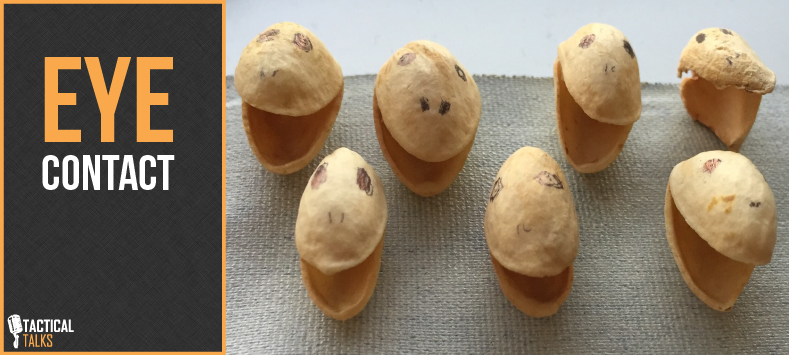Have you ever watched a speaker stare down at the floor? Almost as if they were avoiding eye contact with the audience entirely. Have you done it? I know I’ve done it when I first began in public speaking. I see it all the time. Do you know why this occurs?
My bets are on nervousness or lack of preparation (or both).
Maybe the thought behind it is “If I can’t see you, you can’t see me”? In fact, that reminds me of the movie Big Daddy with Adam Sandler. In it, Adam Sandler’s son gets nervous in front of strangers and so he (Adam) gives his son a pair of sunglasses that supposedly make him invisible…just as long as the sunglasses are on. Spoiler alert! They don’t actually work, and neither does looking at the floor when standing in front of an audience. They’re still looking at you.
There are other variations of this such as quick-scanning the entire room back and forth faster than a flip flopping politician (my apologies to EVERY politician for this despicable jab). (I’m really not sorry though). (Still meant every word). What I mean is that there is no actual eye contact made between the audience members and the speaker, like a sprinkler head arbitrarily spraying the crowd.
And I’m sure you’ve heard this one, “Just look at their foreheads or at the wall just above their heads…” Hmm. I’m not sure where to begin with this one. Besides it being a tad silly, it sounds like a complete disconnect. But without a connection with the audience, how do you convey sincerity or show your passion to the audience?
Because, as a speaker, the listeners are not expecting to see an actor in a movie. An actor doesn’t have to build the same connection that a speaker does, the dynamic is completely different. You (the speaker) are expected to acknowledge those that came to see you speak, and eye contact is high priority!
Overall, these are bad alternatives. Eye contact shouldn’t be substituted for any parlor tricks. Do ya’ feel me? It’s best just to accept that reality and work on improving your ability to smooch thine neighbor’s eyes.
What’s the big deal with eye contact and why should you practice it?
Why is eye contact something you should practice?
I’ve never had an issue with making eye contact with someone in a one-on-one conversation, but something about a crap-load of eyes fixated on me would louse up my focus.
Early on in my speaking journey this was a huge problem for me. Let me explain. I’d be rambling on through my presentation and when I would make solid eye contact with an audience member, my brain would start analyzing the person that I made eye contact with. Did they look interested? Do they look friendly? Are they asking themselves these very same questions about me?
It wasn’t so much the nature of the questions or the self-conscious thoughts, it was that all of that would distract me from my message, which would at times make me lose my train of thought. That’s another way of saying I would forget what the hell I was talking about. I’d end up having to take a moment, rack my brain, and re-focus my thoughts.
The key is getting used to eye contact.
How do you practice something as intimate as eye contact?
Okay, so how do you get used to it?
Of course, the best practice is in front of a live audience, but this may not always be possible. Solo practice is sometimes the only option available. Luckily, it’s still a good option—depending on how you do it. Have you ever watched the Netflix show Orange Is the New Black? It’s a good demonstration of the power of eye contact. Watch the show’s intro to see what I mean.
There’s something about those eyes gazing back at yours. Do you agree? Even though those individuals aren’t physically here, they still elicit a reaction in me. So, it got me thinking, couldn’t this be used to simulate a live audience?
The verdict that I scientifically arrived at is…“damn straight!”
How did I come to this conclusion? Personal experience. It simply works.
Here’s what you can do to simulate eye contact with an audience. Play that intro in a constant loop and practice your speech as if they were your audience. A tad extreme? Maybe…
Another option is to find people who are insanely bored and that have nothing better to do than listen to you blab. Or, if you have kids, you can lock them up in a see-through, sound-proof box and force them to look at you as practice your speech. I sell them if you’re interested, only $37.95!! No, not the box…my kids.
Sorry, got sidetracked…
Apart from those choices, there’s one more that is probably the most ideal. Find an image of an audience on Google. Just type in “audience looking at me.” There’s a ton to choose from.
However, keep in mind, the image that you choose must show the whites of their eyes! Don’t get one of a packed opera theater where you can only see a butt-load of ants. Not helpful. You want to feel them looking at you, remember?
Then, load that image up on your computer and look at it while practicing your talk. And if you’re really creative you can get that image blown up as wallpaper and plaster it throughout your house. The first speech you practice in front of your new wallpaper should be titled “I Swear I’m Not Crazy!”—I’d pay to hear it.
Eye contact is a powerful thing. Get used to it however possible. It’s the portal that links you and your message to the audience; the success of your message depends on it.
P.S. Come with me on quick journey. Imagine that we’ve just locked eyes. After a moment of intense eye contact, you say to me “Hi Matt.” I smile and reply, “You know, I noticed you haven’t got my book yet.”
You shift your gaze from mine, look left and then quickly to the right. Your hands glide slowly to your face and you slip on a pair of sunglasses. You say to me, “I’m invisible now, Matt. You can’t see me.” I nod my head in agreement and pat you on the shoulder. We embrace with a hug. Tears begin flowing down your cheek. Mine soon after.
Without warning you rip off the sunglasses and scream toward the sky, “YES MATT! YOU’RE RIGHT! Forgive me for taking so long. I will go and get the book right now!” We exchange thunderous aerial high-fives and bid each other farewell. “Until next time” you say. I nod and whisper, “Hopefully soon” as my hand rubs away the remaining tears from my face.
Go here and adopt the book 🙂
Be Sociable and Share! – Below are some share buttons that got your name on ’em


